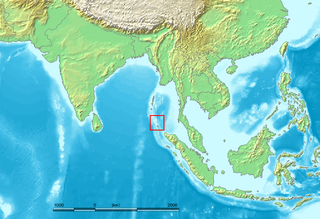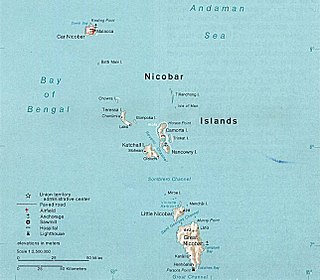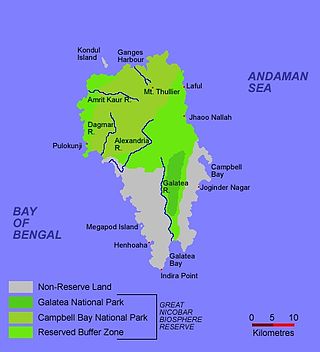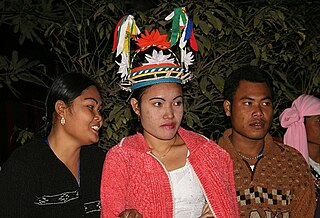
The Austroasiatic languages are a large language family spoken throughout mainland Southeast Asia, South Asia and East Asia. These languages are natively spoken by the majority of the population in Vietnam and Cambodia, and by minority populations scattered throughout parts of Thailand, Laos, India, Myanmar, Malaysia, Bangladesh, Nepal, and southern China. Approximately 117 million people speak an Austroasiatic language, of which more than two-thirds are Vietnamese speakers. Of the Austroasiatic languages, only Vietnamese, Khmer, and Mon have lengthy, established presences in the historical record. Only two are presently considered to be the national languages of sovereign states: Vietnamese in Vietnam, and Khmer in Cambodia. The Mon language is a recognized indigenous language in Myanmar and Thailand, while the Wa language is a "recognized national language" in the de facto autonomous Wa State within Myanmar. Santali is one of the 22 scheduled languages of India. The remainder of the family's languages are spoken by minority groups and have no official status.

The Andaman and Nicobar Islands is a union territory of India. It consists of 836 islands grouped into two island groups, the northern Andaman Islands and the southern Nicobar Islands, separated by a 150 km (93 mi) wide channel of which only 31 are inhabited. Port Blair is the capital and largest city of the territory, located about 1,190 km (740 mi) from Chennai and 1,255 km (780 mi) from Kolkata in mainland India. The islands are sandwiched between the Bay of Bengal to the west and the Andaman Sea to the east with the northern-most point located 901 km (560 mi) from the mouth of Hooghly river. Indira Point at 6°45’10″N and 93°49’36″E at the southern tip of Great Nicobar is the southernmost point of India.

The Nicobar Islands are an archipelagic island chain in the eastern Indian Ocean. They are located in Southeast Asia, 150 kilometres (93 mi) northwest of Aceh on Sumatra, and separated from Thailand to the east by the Andaman Sea. Located 1,300 kilometres (810 mi) southeast of the Indian subcontinent, across the Bay of Bengal, they are part of India, as the Nicobar district within the union territory of the Andaman and Nicobar Islands.

The Nicobarese languages or Nicobaric languages, form an isolated group of about half a dozen closely related Austroasiatic languages, spoken by most of the inhabitants of the Nicobar Islands of India. They have a total of about 30,000 speakers. Most Nicobarese speakers speak the Car language. Paul Sidwell (2015:179) considers the Nicobarese languages to subgroup with Aslian.

According to official estimates in India, 10,749 people were killed, 5,640 people were missing and thousands of people became homeless when a tsunami triggered by the 2004 Indian Ocean earthquake near the Indonesian island of Sumatra struck the southern coast on 26 December 2004. The earthquake registered 9.1–9.3 Mw and was the largest in five decades. It was followed by strong aftershocks on the Andaman and Nicobar Islands. The death toll of the earthquake was 1,500 people.

The Great Nicobar Biosphere Reserve encompasses a large part of the island of Great Nicobar, the largest of the Nicobar Islands in the Indian Union Territory of Andaman and Nicobar Islands. The Nicobars lie in the Bay of Bengal, eastern Indian Ocean, 190 km (120 mi) to the north of the Indonesian island of Sumatra. The reserve has a total core area of approximately 885 km2, surrounded by a 12 km-wide "forest buffer zone". In year 2013 it was included in the list of Man and Biosphere program of UNESCO to promote sustainable development based on local community effort and sound science.

The Shompen or Shom Pen are the indigenous people of the interior of Great Nicobar Island, part of the Indian union territory of Andaman and Nicobar Islands.

The Nicobar Islands rain forests is a tropical moist broadleaf forest ecoregion in the Nicobar Islands, which is part of the Andaman and Nicobar Islands union territory of India. The Nicobar Islands are in the Indian Ocean, lying north of Sumatra and south of the Andaman Islands. The islands are politically part of India, although physically closer to Southeast Asia. Millions of years of isolation from the mainland has given rise to a distinct flora and fauna, including many endemic species.
Car is the most widely spoken Nicobarese language of the Nicobar Islands in the Bay of Bengal.
Nicobar district is one of three districts in the Indian union territory of the Andaman and Nicobar Islands. The district's administrative territory encompasses all of the Nicobar Islands, which are located in the Indian Ocean, between the Bay of Bengal and the Andaman Sea. The headquarters of the district is the village of Malacca, located on the island of Car Nicobar.
Polypedates insularis is a species of frog in the family Rhacophoridae. It is endemic to India's Nicobar Islands: Great Nicobar, Little Nicobar, Pulo Milo, and others. It has been observed as high as 500 meters above sea level.
Shompen, or Shom Peng is a language or group of languages spoken on Great Nicobar Island in the Indian union territory of the Andaman and Nicobar Islands, in the Indian Ocean, northwest of Sumatra, Indonesia.

The Nicobarese people are an Austroasiatic-speaking people of the Nicobar Islands, a chain of islands in the Bay of Bengal north of Sumatra, forming part of the union territory of Andaman and Nicobar Islands, India. Only 12 of the 19 islands are inhabited. The largest and main island is Great Nicobar. The term Nicobarese refers to the dominant tribes of the Nicobar Islands. On each island, the people have specific names, but together they are the Nicobarese. They call themselves Holchu, which means "friend".
Teressa, or Taih-Long is one of the Nicobarese languages spoken on the Teressa Island of Nicobar Islands in India. Bompoka dialect (Pauhut) is distinct. As of 2001, there are 2,080 speakers.
Nancowry is a Nicobarese language spoken on the Nancowry Island in the central Nicobar Islands. It is not mutually intelligible with the other Central Nicobarese languages, and is distantly related to Vietnamese and Khmer,
information time milo is an island in the Nicobar district of Andaman and Nicobar Islands, India, and is home to a village of the same name. It is located just north of Little Nicobar Island.
Shompen hut is a village in the Nicobar district of Andaman and Nicobar Islands, India. It is located in the Great Nicobar tehsil.

John Richardson was an Indian Anglican bishop and politician.

Frederik Adolph de Roepstorff was a Danish philologist who worked in the Andaman penal colony in India, where he was shot dead by a convict. He studied the languages of Andaman and Nicobar tribes and collected numerous natural history specimens. The Andaman masked owl was named after him by Hume.
Great Nicobar Development Plan is a planned mega-infrastructure project for the southern tip of Great Nicobar Island in Andaman Sea of India. The island comes under the Nicobar district administriation in the Indian union territory of Andaman and Nicobar Islands.











